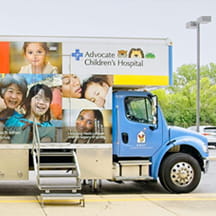Leaders from Children’s Hospital of Orange County (CHOC) gathered in 2018 for a retreat with key stakeholders from local schools, including school nurses. When asked how the hospital could better assist them in promoting optimal health outcomes for their students, a singular theme dominated the conversation.
“The school nurses resoundingly wanted access to our EMR (electronic medical record),” says Megan Beckerle, MSN, RN, CCM, director of cross continuum care coordination at CHOC. “So, we knew we had to take steps to provide them access while making sure we had a process that protected our patients.”
The Orange County school nurses were not alone in their request. The National Association of School Nurses has advocated for wider access to health system EMRs, describing them as “an essential tool for the 21st century school nurse.” A 2022 study examined data in three school districts six months before and after nurses were given access to a hospital-based EMR and found a 34% decrease in emergency department visits and a 44% drop in hospitalizations.
Allowing EMR access
Legal and privacy concerns are the biggest challenges in providing EMR access to schools. The Health Insurance Portability and Accountability Act of 1996 (HIPAA) and the Family Educational Rights and Privacy Act of 1974 (FERPA) regulate medical information access and communication between schools and health care systems. CHOC’s information systems and medical records teams, working closely with local school nurses, were able to clear the legal obstacles and began offering read-only access to the school nurses in 2019. Today, nearly 150 nurses utilize the program.
Read next: Using School Attendance Data to Improve Health Outcomes
Parents must provide consent for their child’s medical records to be accessible to the school nurses, who seek permission on a case-by-case basis. Typically, they only request access for medically complex children or those who pay frequent visits to their office, so the program’s student population is relatively small — to date, about 330 children are enrolled.
But having access to that information makes a dramatic difference for those participating. Beckerle recalls one example of a diabetic student whose parents hadn’t provided the school nurse with her care action plan. When the girl became ill at school, the EMR access enabled the nurse to immediately provide the care she needed.
“She went straight into the medical record, pulled the information on the patient and knew the plan right away,” Beckerle says. “It was super exciting that she was able to get exactly what she needed and was able to implement it quickly.”
Next steps: School-initiated EMR data
CHOC is looking at additional ways to leverage school nurses’ relationship with its patients to improve outcomes. The next natural progression would be to permit school nurses to add notes to a patient's EMR. “They almost become an extension of our health care system as the front line for us in schools,” Beckerle says.
CHOC is also piloting a program with a school district to upload student attendance data into the EMR. Seeing a recent string of school absences, for example, could give CHOC providers a more complete picture of a patient’s overall health.
“A provider might think they’re knocking it out of the park medically and clinically with a patient, and then they look at the attendance data to see that this child actually missed 10 days of school recently,” says Terri Iler, CHOC’s director of community clinical outreach. “That might warrant further conversation and maybe an exploration of how a medical condition or other factors might be influencing that child's success at school.”


